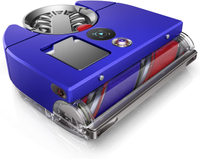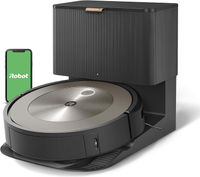Best robot vacuums in 2024 tested and rated
We’ve tested over 30 models to find the best robot vacuum for each budget and scenario.

The best robot vacuums balance sharp design with unrivaled cleaning performance. We've called in and tested dozens of models to find those that deliver the strongest debris pick-up and smart features. Each robot is evaluated using a scoring system as it makes its way through a series of cleaning tests in our labs.
Our overall winner is the iRobot Roomba s9+; it's not only fast but puts up impressive cleaning scores across the board, particularly in pet hair. Plus, it works together with compatible Roomba robot mops so you can make your floor shine with finishing touches.
At $1,099 however, the Roomba S9+ isn't for everybody. Our best budget pick — which is also the best for pet hair — is the $159 iLife V3S Pro, which cleans like a champ without breaking the bank. Our guide features other high-scoring robot vacuums across a wide range of prices and uses. Read on to learn more about all of the models we tested.
The quick list
Here’s the best robot vacuums you can buy right now based on our testing. Read on for our full in-depth reviews.
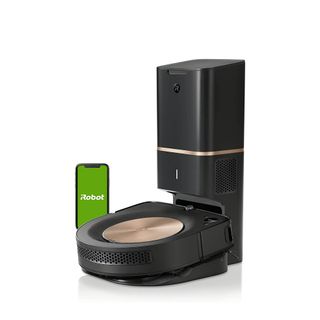
Value: ★★★☆☆
Performance: ★★★★★
Features: ★★★★★
The iRobot s9+ offers the best of everything; it’s simple to operate and provides strong pick up across hard floors and carpet, excelling in pet hair. Its self-emptying base saves you time and effort on maintenance too.
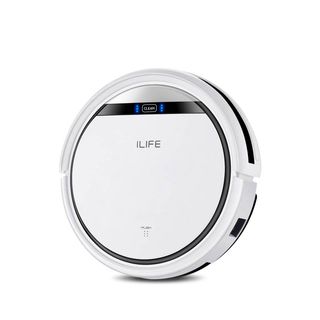
Value: ★★★★★
Performance: ★★★★★
Features: ★★★☆☆
For premium cleaning performance at an affordable price, the iLife V3s Pro vacuum provides excellent value. It picks up all kinds of debris and navigates with ease. It lacks smart home features, but the included remote control works well.
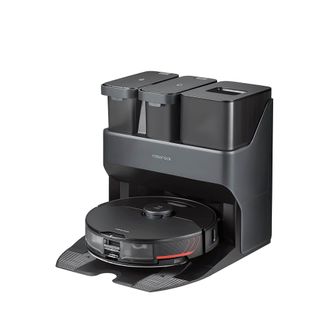
Value: ★★★★☆
Performance: ★★★★☆
Features: ★★★★☆
Roborock's S7 MaxV Ultra vacuums and mops floors so they're not only clean but shiny too. Its strong performance is backed by features like an onboard camera for a live-view of your home, as well as a self-emptying base that can clean the mop pad.
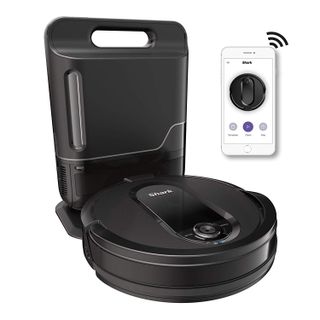
Value: ★★★★☆
Performance: ★★★★★
Features: ★★★★☆
Shark's IQ robot vacuum is stacked with smarts and collects then deposits debris into its docking station after each cleaning session. This bagless base system holds over a month's worth of dirt. You can use its advanced scheduling feature to set and forget it until it's time to empty out the dock.
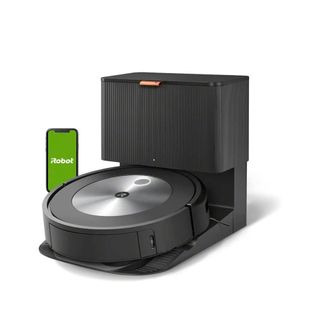
Value: ★★★★☆
Performance: ★★★★☆
Features: ★★★★★
The iRobot Roomba j7+ stands out for its intelligent mess recognition. It learns from each object it encounters and offers excellent obstacle avoidance. Plus, it’s guaranteed to avoid pet waste. There’s a handy cleaning base as well.
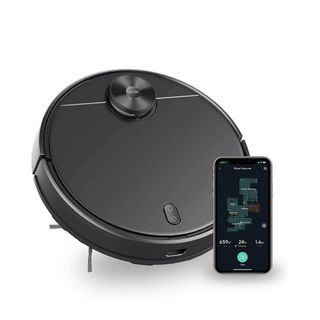
Value: ★★★★★
Performance: ★★★☆☆
Features: ★★★★☆
If your living space consists primarily of hard floors you should invest in the Wyze robot vacuum. It excels at collecting all kinds of debris from this surface. Plus it’s fast at mapping and the app is easy to navigate too — all at a great price.
Robot vacuum testing procedures
Our lab tests evaluate each robot vacuum on its performance across two 5x5 foot surfaces. The first is a traditional hardwood floor while the second is a medium shag carpet. We measure out 20 grams of Cheerios, 20 grams of kitty litter, and 2 grams of pet hair. Next, we dump them across each floor type individually and weigh how much material the robot leaves behind to evaluate cleaning effectiveness.
After we record each robot vacuum's scores, we let these machines loose in our tester’s home to see how each holds up in terms of navigation, obstacle avoidance, and coverage in real-world testing. Any special features such as app control, mopping functions, and self-emptying bases are factored in too. This all adds up to days of testing, which is why you can trust our results. Scroll down to see our picks for the best robot vacuums.

Hunter Fenollol is the Senior Editor of the Smart Home section for Tom’s Guide. He specializes in smart home gadgets and appliances with a focus in robot vacuums and security cameras. Prior to joining the team, Hunter reviewed computers, wearables, and mixed reality gear for publications that include CNN Underscored, Popular Mechanics, and Laptop Magazine

Meghan McDonough is a journalist who currently tests and writes about robot vacuums. Since 2008, she’s written about laptops, mobile phones, headphones, speakers, and other consumer tech.
The best robot vacuums you can buy
Why you can trust Tom's Guide
Best overall


iRobot Roomba s9+
(Image credit: Tom's Guide)
Specifications
Reasons to buy
Reasons to avoid
iRobot's Roomba s9+ is one of the smartest and most thorough robot vacuums I've tested, which is why it's the best robot vacuum overall. It has advanced mapping, so it can record and remember a blueprint of multiple floors of your house after just a few trips; you can then label individual rooms, and tell the s9+ to clean specific rooms on specific days. I suggest scheduling it for when you're out of the house, as this is admittedly a noisy robot vacuum, particularly on hardwood floors; I struggled to have conversations as it cleaned. It's also only the heavy side; I felt this as soon as I removed its 8.15-pound body from the box.
However, with an average pick-up score of almost 97 achieved during testing, it's a capable vacuum on both hard floors and carpet. I noticed that it's better at picking up more granular materials like pet hair and kitty litter compared to Cheerios — this is usually the other way around. So it works better for collecting smaller debris.
The Roomba s9+ also comes with a self-emptying charging base; while it's unfortunate that you'll have to purchase replacement bags for this base, you will only have to empty the container every 30 days. This will save you a lot of time versus emptying the onboard dustbin. If you have a bit more cash to play with, the s9+ can also talk with the company's Braava jet m6 robot mop, with the two working as a team, vacuuming floors, followed by a mop. Ultimately, this robot vacuum comes at a steep price, but it leaves little room for improvement.
Read our full iRobot Roomba s9+ review.
Best robot vacuum for pet hair



Specifications
Reasons to buy
Reasons to avoid
The iLife V3s Pro is the best robot vacuum you can get for less than $200. Despite its low price, the V3s Pro consistently outperformed other robot vacuums that cost three times as much. It picked up nearly all of Fido's fur in our lab tests — making it the best robot vacuum for pet hair — and it performed well in everyday home usage. It reached well up against the baseboards, picking up flaky bits of onion skin in my kitchen, and it collected all breadcrumbs in its path. It was about average in terms of noise compared to the other robot vacuums on test though, at 64.1dB.
There are a few caveats when purchasing a robot vacuum this cheap. For starters, the iLife V3s Pro is slow, taking more than 90 minutes on average to clean a 5x5-foot test space — others took less than 30 minutes. Also, it can’t be controlled from your smartphone, so you have to use the included remote control, and you can't connect it to Alexa or Google Assistant to turn it on or schedule cleanings. But, if these are #FirstWorldProblems you can live with, then you'll be pleased to know the V3s Pro is great at doing the one thing it needs to do well, and that's picking up debris. For this price, its downsides are tradeoffs I'm willing to make. That's why it's also one of the best cheap robot vacuums.
Read our full iLife V3s Pro review
Best robot vacuum with mopping



Specifications
Reasons to buy
Reasons to avoid
The S7 MaxV Ultra comes with an all-singing, all-dancing charging base, which has a whopping footprint of 16.6 x 19.4 inches. So it’s safe to say you need some space if you want to invest in this combination robot vacuum and mop cleaning powerhouse. The hefty charging base isn’t just for show though — it comes with the expected self-emptying capabilities (it can hold up to 7 weeks worth of dust), plus it contains two water tanks, one each for clean and dirty water.
With this setup, it can wash its own mop cloth when necessary, which is quite a useful and rare feature. A small bristle brush will scrub the cloth once the robot docks and fresh water is applied while the dirty water is extracted. This is an ideal function if you hate the task of removing and washing the cloth after each cleaning session like with the Roomba J9+ Combo.
With an overall cleaning score of 91.26, this robot vacuum should not be overlooked. It achieved an almost perfect score when set to the task of picking up Cheerios and performed well when collecting kitty litter (95.73 on average). The S7 is smart enough to know when it's on a rug and can lift its mopping pad so that your carpet doesn't get soaked. It's gentle in operation too, slowing itself down as it approaches obstacles.
However, its streak suffered when it came to collecting dog hair from my carpet — it picked up just 58%. That’s the lowest score I’ve seen compared with similar models; the Roomba j7+ is the closest at 72.5%, but even that’s a sizeable gap. That being said, the Roborock S7 MaxV Ultra offers a quality performance otherwise and the technology is very impressive. Although its AI object recognition actively avoids most obstacles, it failed to recognize fake pet poop on the test and mistook it for fabric instead. Nevertheless, the robot vacuum would suit households without pets who value convenience above all, and don’t mind splurging for it.
Read our full Roborock S7 MaxV Ultra review.
Best value robot vacuum



Specifications
Reasons to buy
Reasons to avoid
You can simply set and forget the Shark IQ robot vacuum for over a month thanks to its advanced scheduling capabilities and self-emptying dustbin. The easy-to-use Shark app makes automating the robot vacuum painless and relays any issues the bot runs into. For the most part, the robot goes out on its own and deposits up to 45 days worth of debris into its bagless docking station.
It's super convenient not to have to dump out contents after every run especially if you're upgrading from a typical on-board dustbin. The Shark IQ excelled at all of our tests, even picking up kitty litter on the carpet which other models (like our previous pick for this category, the Roomba i3+) scored low marks in. I was particularly impressed by the effectiveness of its row-cleaning pattern — it thoroughly picked up fur and debris even if it blew or knocked them to the sides on an initial passthrough.
At 3.5 inches tall, it's an average height, but it may struggle under low-reaching furniture. For instance, it reached the gaps under my kitchen cabinets with ease, but couldn't clear the couch. The Shark IQ can be controlled via an app as well as with Alexa and Google Assistant, so you can create a schedule and connect it to smart home devices. It even has mapping features of more expensive robot vacuums so you can mark individual rooms as well as set invisible boundaries called No-Go zones. This is a high-performance option if you want a self-emptying charging base, but without paying top dollar.
Read our full Shark IQ review.
Best robot vacuum for pet poop



Specifications
Reasons to buy
Reasons to avoid
iRobot’s newest offering, the Roomba j7+ is one of the best Roombas because of its obstacle avoidance technology. With this, it can essentially detect everyday objects, such as cables and socks and steer clear of them. The main benefit of this feature is the bot’s ability to avoid pet poop. In fact, iRobot is so confident in the Roomba j7+’s intelligence that it’s introduced the Pet Owner Official Promise (P.O.O.P), whereby iRobot will replace any j7+ that fails to avoid solid pet waste. This robot vacuum is constantly learning with every run too, making it one of the smartest I’ve seen. I dropped some fake dog poop in its path on test, and it didn't disappoint. Although it didn't recognize larger objects, such as socks, shoes and dog toys at first — it should do this with time and software updates.
The j7+ comes with a cleaning base which is hard to fault. It can hold up to 60 days of debris and looks easy on the eye compared to other bases — plus it’s more compact too. This robot vacuum scored well for collecting large debris, such as cereal and kitty litter, collecting 98.33 and 94.6% respectively. I’ve seen better performances on pet hair, but the score was still a respectable 82.5%. Ultimately, this is a great investment if your pets are prone to accidents and you want to avoid further mess. Keep in mind that's it's a little forceful prior to mapping though — it even knocked one of the weights which secures the walls out of place during our debris tests.
Read our full iRobot Roomba j7+ review.
Best robot vacuum for hard floors



Specifications
Reasons to buy
Reasons to avoid
This robot vacuum cleaner from Wyze makes the list because of its exceptional performance on hard floors. When I put it to the test, it picked up 100% of pet fur and cereal — it just missed a perfect score, as it collected roughly 97% of kitty litter. It's speedy as well, mapping the first floor of my home in a near record of 7 minutes, thanks to the Quick Mapping option.
On top of this, the Wyze app is easy to navigate and intuitive to use. It also comes with useful features, such as a location-based trigger, which I've only seen on iRobot Roombas. It needed my address to use this function, which I wasn't crazy about, but I could extend the size of the boundary that encompassed my home, which had its benefits. For instance, I could make sure the robot wouldn't run when I walked the dog, but would when I was a sufficient distance away — the Roomba i3 always started cleaning when I walked the dog by comparison.
In my opinion, the Wyze Robot Vacuum is a much more advanced option than the Eufy G30 Edge, which comes at a similar price. This is because you get room division as well as no-go zone options.
Read our full Wyze Robot Vacuum review.
Best robot vacuum for smart home features



Specifications
Reasons to buy
Reasons to avoid
The Samsung JetBot AI+ is packed full of features to say the least, and it's one of the most attractive robot vacuums to grace my floors. This intelligent and gentle cleaner almost acts as a security camera as much as a robot vacuum cleaner. It can patrol your home while you’re away and livestream what it can see straight to your phone. It can also recognise objects, although the accuracy of this varied for me. It identified the iRobot Braava jet m6 robot mop as a cup/plate, and thought a stray dog toy was a sock/towel. It can also offer alternative cleaning patterns, so you can choose the route you want it to take. It is tall as robot vacuums go at 4.75 inches — it could just reach under my kitchen baseboards, but failed to get under the dishwasher, which the majority of others models could clear.
It’s quick to map out the home and easy to create no-go zones or select specific rooms to clean. This model also comes with a self-emptying base, which makes it low maintenance, but it is just as noisy as other vacuums when it empties. In terms of cleaning, it’s very careful to navigate its way around furniture, but the overall pickup could be better, particularly on pet hair (78.5%). Having said that, it was great for collecting cereal, with an overall score of 99.6%. It’s not a cheap investment, but this robot vacuum is good-looking and I can’t complain about the range of features.
Read our full Samsung JetBot AI+ review.
Also tested
We've tested many robot vacuums at Tom's Guide. While most perform great, they aren't as easy to recommend for everyone. That's due to a lack of features at higher prices or more niche use cases that aren't as versatile as the top models in our list. Still, the models below are worth checking out if money isn't an issue.
Dyson 360 Vis Nav (★★★★☆)
The Dyson 360 Vis Nav almost has it all: immense suction, excellent edge cleaning, and a great design. Plus it's packed with all sorts of features, such as disc brakes and a remote electronic lock. However, it's expensive and lacks a self-emptying option which makes it more hands-on.
Read our full Dyson 360 Vis Nav review.
Roomba J9+ Combo (★★★★☆)
If your home has an equal ratio of hardwood floors to carpets then iRobot's hybrid robot mop and vacuum is tough to beat. You get a thorough clean with a mopping pad that automatically retracts atop the vacuum. This prevents any water from dripping onto fabrics. But for the price it is a hassle to have to manually remove and wash the mop after each cleaning session.
Read our full Roomba J9+ review.
How to choose the best robot vacuum for you
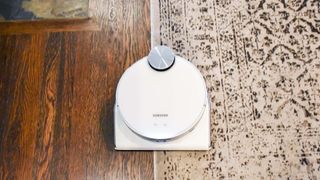
Before you start shopping for a new robot vacuum, you should consider what you need from it and how much you’re happy to spend. You will need to decide on the following:
- How much you’re willing to spend.
- The size of the space you want to clean.
- If you need a vacuum to clean up pet hair.
- If you want to control the vacuum using your smartphone.
Most robot vacuum cleaners will fall into two categories: Budget models, which lack smart features and cost around $200 or less, and smart models which cost upwards of $500. Budget models can be just as effective at cleaning as smarter options, but they’re not as intelligent and generally will bump into walls to find their way around. Budget models can also take much longer to clean because of their random cleaning pattern. For instance, a 15 x 15-foot room can take over an hour for a budget robot vacuum to navigate.
Premium models come with sensors that they use to map out and remember the room before cleaning. Because of this, their cleaning route is much more efficient — some of the best robot vacuums we’ve seen can clean the same space in just 10 minutes by comparison. These high-end vacuums naturally come with other useful features too, such as Wi-Fi connectivity, Alexa and Google Assistant compatibility, and the ability to clean individual rooms. Premium models can also feature self-emptying bases, which really add to the whole convenience factor, but as a result, will add a hefty sum to the price tag. Before you purchase, you should ask yourself: are robot vacuums with self-emptying bases worth it?
How to clean your robot vacuum
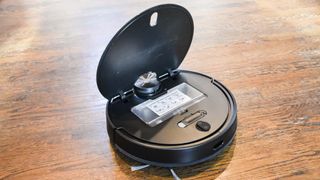
Forgetting to clean your robot vacuum is one of the 9 vacuum cleaner mistakes you’re probably making.
Because robot vacuums are designed to clean, most of us forget that these too need regular maintenance. They have surprisingly small bins (some less than 400ml) and so, unless you’re lucky enough to own a self-emptying model, these will need emptying after each run. On top of this, it’s good practice to cut free any hairs which have tangled in the rotating brush as well as clean the filters. Some brands such as Eufy, iLife and Roborock will provide a cleaning tool which can help with these tasks. The filters will need replacing as well — you should refer to your manual for guidance on how often to replace and where to buy.
If you do not empty the bin or check for tangled hairs regularly, it will affect the performance of the robot vacuum. In fact, a full bin will result in it dragging any mess around the floors rather than picking it up.
If you own an app-connected robot vacuum, you might also get maintenance guidelines and reminders for when it’s time to clean. Some even feature replacement schedules so you don’t need to make a note in the diary!
Robot vacuum features
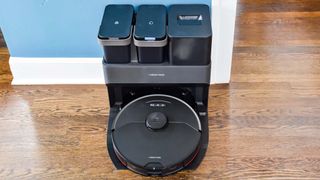
- Self-emptying — This feature is available on more premium models. When the robot vacuum’s dustbin is full, it will return to its charging dock to ‘self-empty’. This is then stored in the dock until this larger bin is full and needs emptying, which you will need to do. Self-emptying models are great for those who suffer from allergies as the dust is released into the air less often.
- Wi-Fi connectivity — Most robot vacuums can connect to your smartphone via Wi-Fi, but some lower-end models don’t have this option. It allows you to control and monitor your robot vacuum from your phone and gives you access to all sorts of additional features, depending on the model.
- Hybrid models — Some hybrid models exist which can both vacuum and mop. These tend not to perform as well as dedicated machines, but if it’s what you want, the Roborock S7 mentioned above is the exception.
- Mapping — Some robot vacuums can map-out your home using sensors, so they can remember any obstacles, such as the stairs. The map can be displayed on your phone if the robot vacuum has Wi-Fi connectivity, and using this it can plan out the best cleaning path, rather than moving randomly.
- No-go zones — If you have the mapping technology, some allow you to set no-go zones if there’s certain areas you want to avoid, such as your pet’s food bowls or an expensive rug.
- Targeted rooms — Similar to no-go zones, some also let you set targeted rooms, if you only need to clean a particular area.
- Multiple floors — Mapping can sometimes also cover multiple floors, which can be useful if you live on more than one level.
- Scheduling — This is quite a common feature for robot vacuums. By connecting with your smartphone, you can schedule when you want it to clean, be it daily, weekly or when you’re not at home.
- Remote control — Some entry level robot vacuum cleaners come with a remote control rather than Wi-Fi connectivity. It doesn’t give you as many options, but you can still control it hands-free using this.
- Battery life — Battery life is important to consider. If you’re interested in a model which comes with a base, it can self-charge between runs. However, if the model you’re looking at needs to be manually plugged in, you might come home to a half-finished job.
- Dust capacity — The smaller the dustbin, the faster it will fill. Look for a minimum of 400ml, unless it self-empties of course! Self-emptying models tend to come with vacuum bags in the charging base, whereas dustbins on the robot vacuum themselves tend to be bagless. For more info on bagged vs. bagless vacuums, check out our guide.
Robot vacuum test results
Here's the table on which robot vacuums are best at picking up dirt and pet hair. Note that while all of the robot vacuums were tested by picking up the same material on the same surfaces, those with an asterisk were tested in a 15 x 15-foot square, whereas the other models were tested in a 5 x 5-foot square.
| Header Cell - Column 0 | Overall | Pet hair | hardwood | carpet | pet hair hardwood | pet hair carpet |
|---|---|---|---|---|---|---|
| iLife V3s Pro* | 97 | 99.5 | 99.8 | 94.2 | 100 | 99 |
| Roomba s9+ | 96.8 | 98 | 96.3 | 97.3 | 99 | 97 |
| Roomba i7+ | 90.4 | 90.5 | 89.8 | 91 | 88 | 93 |
| Shark IQ | 98 | 98.5 | 99.8 | 98.7 | 100 | 97 |
| Roborock S6 Max V | 90.6 | 80.5 | 90.7 | 90.4 | 78 | 83 |
| Roomba i3 | 90.1 | 75.5 | 96.2 | 84 | 93 | 58 |
| Eufy Robovac 11s* | 85.8 | 67.5 | 85 | 86.7 | 60 | 75 |
| iRobot Roomba j7+ | 91.8 | 82.5 | 94.8 | 88.9 | 92.5 | 72.5 |
| Samsung JetBot AI+ | 89.5 | 78.5 | 89.5 | 89.6 | 71 | 86 |
| Roborock S7 MaxV Ultra | 91.26 | 78.25 | 97.63 | 84.88 | 98.5 | 58 |
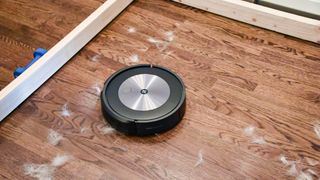
Robot vacuum FAQs
Can a robot vacuum replace a normal vacuum?
Robot vacuums have improved tenfold since they were first introduced, both in terms of navigation and pickup. And while the gap between these devices and upright models is indeed closing, there is still admittedly a gap. Robot vacuums do not offer as strong a performance as upright vacuum cleaners, particularly corded ones. It’s for this reason that we don’t recommend throwing away the best vacuum cleaner even if you decide to invest in one of these strong contenders.
Even if you have one of the best Roombas, robot vacuums are recommended more for light, everyday cleaning, rather than for handling really embedded debris. So, ideally you will still want to run your regular vacuum every so often, while the robot vacuum helps keep dust down in the interim. That’s not to say your robot vacuum won’t lend a hand though. By keeping on top of the light debris, you won’t need to use your full-sized vacuum so often. So, it will save you some manual labor in the long run. Plus, keep in mind that robot vacuums are still improving with each new release, so over time, the necessity for your upright model will lessen. If you opt for a design which can mop as well, this too will likely replace the need for a mop and bucket in the future — but it’s not quite there yet. Our robot vacuum buying guide can also help you decide which is suitable for your home.
Where should I place my robot vacuum?
First and foremost, you should follow the directions in your instruction manual for where to place the robot vacuum. While most will offer similar guidance, the measurements required can vary, and some designs may prefer a greater clearance. Generally speaking though, your robot vacuum should be placed against a flat and straight wall on a level surface, with around 3 ft of clearance on each side, and at least 4 ft in front. This is so that it has adequate space to start cleaning and dock on re-entry, without any furniture getting in the way. Don’t forget that it needs access to a power socket as well.
If you’re using a standard charging base, you may have to fix it to the wall, so the robot vacuum won’t knock it out of place. Some bases come with stickers to help with this issue. If you’re lucky enough to own a robot vacuum with a self-emptying base, it should be heavy enough to hold itself in place. Although this does mean it will likely require more clearance space and will protrude further out from the wall as well. Make sure you have a space in mind for your robot vacuum’s dock before you make a purchase, otherwise you might have to move some furniture around.
Are self-emptying robots worth it?
Most premium robot vacuum brands now offer self-emptying charging bases. This differs from your regular charging base in that your robot vacuum can empty the contents of its dustbin automatically, to be stored within a dust bag contained in the base. This gives your robot vacuum a new level of independence, because it no longer requires your assistance to continue cleaning. Should the on-board dustbin reach capacity, the robot vacuum can empty itself via its base and then continue on route. Of course, the dust bag will eventually need changing within the base, but these will often last for several weeks at a time.
As well as saving on this maintenance, self-emptying bases are a good investment if you suffer from allergies. This is because the debris is contained within the dust bag, rather than being dispersed into the air each time you empty the on-board bin. Self-emptying bases are also generally heavier than your standard charging base, meaning they’re less likely to be displaced as your robot attempts to park. A self-emptying base opens up other opportunities too — some bases hold water tanks to automatically fill an on-board tank for the best robot mops. Others will even scrub and clean the mop cloth as part of its docking. Ultimately, a self-emptying base will make your robot vacuum cleaner more versatile.
It’s not all good news though. As you can see just by looking at self-emptying bases, they are a chunky addition and will take up extra space in your home. They’re also remarkably loud in operation, because the dust in the vacuum needs to be effectively sucked into the dust bag. Though some robot vacuums are clever enough that you can set do not disturb timings via the app to keep things quiet. Then there’s the expense to consider — self-emptying bases naturally add a hefty sum to the price tag.
Ultimately, self-emptying bases are more of a luxury feature, rather than a necessity and its worth comes down to how much you value it. If you dread the task of emptying the on-board dustbin or suffer from allergies, it may be a worthwhile investment. But, if you’re tight on space and shopping on a budget, it may be one to skip. For more tips, check out are robots with self-emptying bases worth it.
Sign up to get the BEST of Tom’s Guide direct to your inbox.
Upgrade your life with a daily dose of the biggest tech news, lifestyle hacks and our curated analysis. Be the first to know about cutting-edge gadgets and the hottest deals.

Katie looks after everything homes-related, from kitchen appliances to gardening tools. She also covers smart home products too, so is the best point of contact for any household advice! She has tested and reviewed appliances for over 6 years, so she knows what to look for when finding the best. Her favorite thing to test has to be air purifiers, as the information provided and the difference between performances is extensive.
